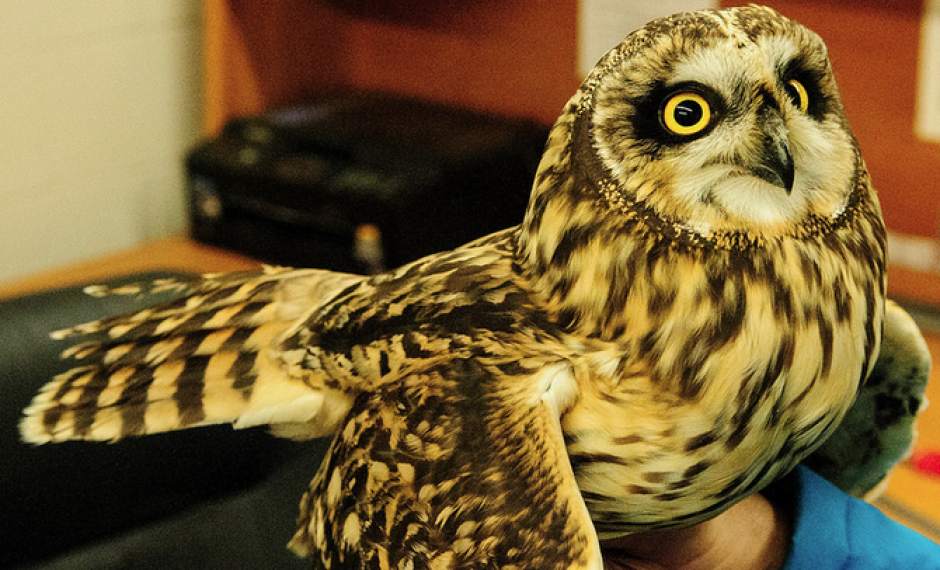https://archive.triblive.com/local/pittsburgh-allegheny/endangered-short-eared-owls-flock-to-pittsburgh-international-airport/
Endangered short-eared owls flock to Pittsburgh International Airport

Pittsburgh International Airport
The short-eared owl is considered endangered in Pennsylvania, although not nationwide. Short-eared owls have small tufts on the top of their heads and round, beige faces similar to barn owls. The birds are smaller compared to other owls at 13 to 17 inches tall with a wingspan ranging from 38 to 48 inches.
When wildlife biologist Bobby Hromack helped trap and relocate four endangered owls a year ago at Pittsburgh International Airport, he didn't expect to see the same type of owl this year.
In the past several weeks, he has trapped three more short-eared owls and released them about 25 miles away in Washington County.
“It seems they like to feed in the (airport) fields in the winter,” said Hromack, who's assigned to the airport from the Department of Agriculture. “We've been seeing them in congregations of three to eight.”
The short-eared owl is considered endangered in Pennsylvania, although not nationwide. Short-eared owls have small tufts on the top of their heads and round, beige faces similar to barn owls. Pennsylvania is considered the southern end of their breeding range in North America. The birds are smaller compared with other owls at 13 to 17 inches tall with a wingspan ranging from 38 to 48 inches, he said.
The birds must be removed from around the airport because of the potential strike risk to planes, Hromack said. He takes part in 144 wildlife surveys per year on airport grounds with assistance from the Allegheny County Airport Authority's wildlife administrator Ben Shertzer.
Wildlife strikes to planes nationwide nearly doubled in the decade leading up to 2011 to more than 10,000, according to a report from the Federal Aviation Administration. More than 500 of those strikes in 2011 caused damage.
Hromack used a unique trap to capture the owls, which primarily eat voles and small rodents. He set up poles in the predators' hunting area and when the owls landed on the top, a trap springs shut, capturing the birds unharmed.
Bob Mulvihill, an ornithologist with the National Aviary in the North Side, put a small metal band around a leg on each bird. He did the same for the owls captured last year. None of the newly captured owls had a band.
“This allows us to band them and get their age, sex and health. Having a species like this is not normal. It's a special case,” Mulvihill said. “The owls were all in excellent health. They were first-year birds, meaning this is their first winter.”
He said three of the owls were likely female.
Airport officials take several measures to keep birds, deer and other animals away. Grass is cut to between six and 10 inches, long enough to give ground prey cover, but too short for the grass to produce seeds, which attracts other types of birds. The type of grass planted is unpalatable to grass-eating birds, particularly waterfowl, Hromack said.
Bushes are kept trimmed, and standing water is removed. Officials cull deer on airport land.
“If anything is posing a direct threat on the runway, we're authorized to use lethal force,” he said.
Bobby Kerlik is a staff writer for Trib Total Media. He can be reached at 412-320-7886 or bkerlik@tribweb.com.
Copyright ©2025— Trib Total Media, LLC (TribLIVE.com)
